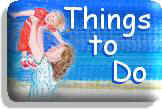Back to Main Teacher's Menu

Social Studies
Family creations and biography
In Katherine’s Quilt, family members contribute scraps of cloth or
articles of clothing and take part in stitching the finished quilt for
Katherine. In a very tangible way, they have woven strands of their
family’s story into an heirloom for Katherine to love and pass down
to future generations. Students can collect one favorite item of
clothing from each family member that helps tell their family
stories. In the classroom, students can create and decorate a
special box to house these items. To preserve these memories,
students write a description of each piece of clothing with a short
biography of the family member who contributed it. Students can make
plans to keep these in their boxes or decide to make a pillow sham,
quilt square, or other piece of textile art with them.
Heirlooms and Interviews
Quilts are just one example of family heirlooms that tell a story or
hold special memories. Students investigate their homes for special
heirlooms that have been handed down. Draw a picture or take a
photograph of the heirloom. Interview family members and write a
description of the heirloom, its history and why it holds special
meaning to the family. Students can also create something to
contribute to the family story, to be a future heirloom.
Quilts Through History
Throughout history, women in many different cultures have made
quilts for practical purposes – to keep warm. However, besides
being warm, quilts also were outlets for artistic expression and
political opinions. Women made quilts for special celebrations, such
as a birth of a child or a wedding. They made and sold them to
raise funds for civil war soldiers or to help fugitive slaves.
Women worked together to create friendship quilts in a quilting bee.
This also gave rise to social opportunities to visit with friends or
to discuss current affairs. The designs on the quilts could range
from abstract “crazy quilts”, to structured quilt block patterns, to
landscape or album quilts, which told a story. Students can design
their own quilts on a piece of paper. If you were to make a quilt,
what kind would it be? What story would it tell? What design
elements would you incorporate? After designing the quilt,
students can write a description of the quilt, including the story
it might tell.




